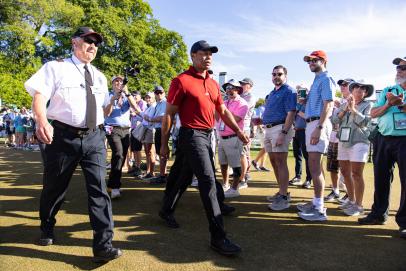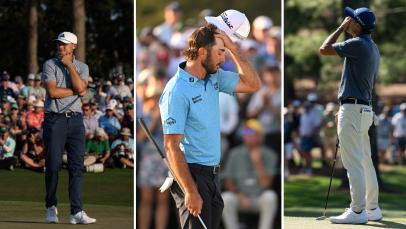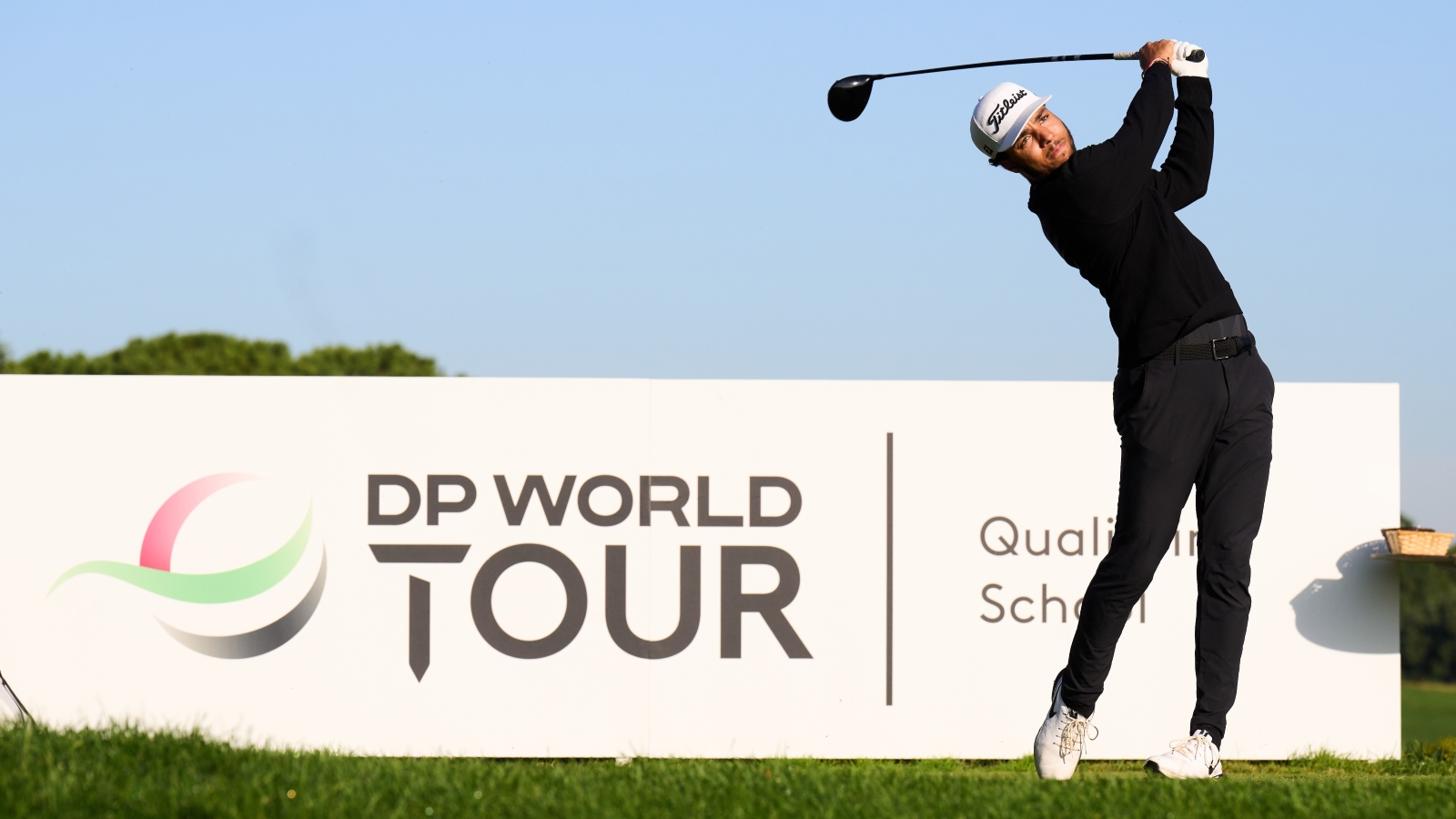What do disappointing Masters final-round TV ratings actually mean? – Australian Golf Digest

- by Admin
- April 17, 2024

HILTON HEAD ISLAND — It has become a pressing, even annoying question: What do we make of the 20 percent decline year-over-year in CBS’ final-round ratings for the 2024 Masters?
Sports Business Journal reported on Tuesday that the network drew 9.58 million viewers on Sunday. It was the lowest viewership since Hideki Matsuyama’s 2021 win (9.45 million). If you don’t count the two COVID years of 2020 and 2021, it was the lowest figure since 1993.
At the RBC Heritage, two players had two very different perspectives, and what they said represented both the underlying truth of what’s afflicting professional golf at the moment and the difficulty in analyzing temporary drops in viewership.
“I am surprised by that, to be fair,” said Matt Fitzpatrick, the defending champion at Harbour Town. “Obviously you’ve got everyone playing together, like everyone wants, and the viewership’s down. But, yeah, it’s bizarre. I think, for me, speaking to people at home and stuff, people are fed up with hearing about the money. I think that’s the biggest thing.”
“See, I just find it really hard to believe that ratings are down,” said Wyndham Clark, sounding a note of disagreement. “I think people that I do know that are watching it loved it. I think golf is growing. I think golf sales have grown. I know golf memberships are growing. It makes no sense at the professional level that the viewership would be down. In my thoughts, is it because everyone is streaming and people are watching it from different avenues than maybe the normal telecast? I think that’s a little bit of a skewed stat.”
Scottie Scheffler hugs caddie Ted Scott after clinching his second Masters win in three years.
Ben Walton
Fitzpatrick is right—there appears to be a real, and arguably now measurable, fatigue among a certain set of golf fans for whom the schism between the PGA Tour and LIV Golf has soured their perception of the men’s game and seemingly had some turning elsewhere. And Clark is right, too, both in his contention that golf participation and sales are up across the board, and that more and more viewers are watching the professional game on streaming platforms, which are notoriously hard to measure and which definitely cut into the number of people watching the network telecast (but which were also cutting into that same telecast a year ago).
All of this is to say that discussing changes in TV ratings means recognizing a few caveats that make it harder to draw the firm conclusions that make for a more enticing headline. For instance, take PGA Tour ratings, which are our best lens for putting the Masters drop into context. Up to the Masters, the tour had been averaging 2 million viewers on Saturday and Sunday telecasts in 2024, down from a 2.2 million average a year ago. This includes drops of 35 percent for the final round of the WM Phoenix Open, 30 percent at the Arnold Palmer Invitational and a 15 percent overall at the Players Championship.
That seems to tell a story by itself, until you recognize a few other factors. For one, while streaming options are basically the same compared to a year ago, the hours of content have increased, including 185 hours of live competition for the Players, counting the multiple streaming airing coverage on ESPN+ during a given round. (In 2022 and 2023, PGA Tour Live was most the consumed live sport on ESPN+.) “Digital visits” for the tour are actually up 18 percent compared to 2023, digital users are up 16 percent, and social views have increased to 125 million per week, another 16 percent increase from last year. On social media, the tour had its largest engagement week ever during the Masters—the first to surpass it surpassed 13 million in engagement—and that’s without even having video rights to the tournament.
More Golf Digest Masters coverage  Voices Scottie Scheffler and the 2024 Masters should leave you feeling better about pro golf’s future. Here’s why
Voices Scottie Scheffler and the 2024 Masters should leave you feeling better about pro golf’s future. Here’s why  Voices Masters 2024: What Tiger and Phil can work on for the next year
Voices Masters 2024: What Tiger and Phil can work on for the next year  The Scottie Effect Masters 2024: As Scottie Scheffler charged, his challengers suffered these Augusta gut punches
The Scottie Effect Masters 2024: As Scottie Scheffler charged, his challengers suffered these Augusta gut punches
In terms of TV ratings, tour officials can legitimately argue that they’ve been unlucky in 2024. The final round of the AT&T Pebble Beach Pro-Am was canceled due to bad weather, and the Phoenix Open had significant weather delays that forced the final round to conclude after the start of the Super Bowl. In addition, players from the top 10 in the tour’s Player Impact Program metric—in other words, the most popular players—have only won three tour events in 2024. Meanwhile, the two tournaments prior to the Masters, the Houston Open and the Valero Texas Open, saw increased viewership over 2023. Take all that, throw in the digital growth and consider that leagues including the NBA, NHL, and NASCAR are all down from 2023, and you start to wonder if the dip in golf ratings means much of anything at all.
Even so, a PGA Tour source acknowledged “fan fatigue” as a legitimate phenomenon, one the tour is taking seriously. While acknowledging it exists, what’s difficult is knowing what effect it actually has on ratings. And even when ratings are down overall, they may not be down in specific, important ways; ratings were down at the Players, but peak viewership was almost identical, and total viewers in the 90 minutes before the conclusion were down, but not by nearly as much. (Mind you, you can argue that the growth in recreational participation and equipment sales means that even stagnancy in TV ratings for the professional game is a failure signifying something broken in the professional game; how can you fail to capitalize on a legitimate cultural trend?)
We don’t have streaming data from ESPN+ or Masters.com, but we do know that Thursday and Friday’s opening rounds broadcasts on ESPN were its highest rated since 2015. That didn’t continue into the weekend, obviously, but the same mitigating factors that can apply to the tour’s declining numbers could factor in here, too. For one thing, the final round lacked drama after the back nine. For another, the 20 percent drop is in comparison to a year when there was significant intrigue surrounding the first major that saw PGA Tour and LIV golfers meeting on a major stage for the first time … not to mention a late charge by Phil Mickelson and a duel between Jon Rahm and Brooks Koepka.
Caveats aside, it’s hard to see the ratings as anything but bad news. Even if streaming is up, the TV deals with CBS and NBC are a major source of revenue for the tour (and for the majors), and infinitely more valuable than anything they get from streaming or social. If those networks can’t sell as many ads, then the tour’s hopes of getting more than the $700 million deal it signed through 2030 when the next deal is being negotiated will be particularly challenging. In other words, considering the ultimate payoff, a hit to the actual terrestrial ratings is a big deal that is not offset financially by gains in other sectors. Sources tell Golf Digest that there’s real concern at NBC/Golf Channel about declining ratings, and that CBS executives was extremely disappointed in its Masters numbers, particularly as the network broadcast weekend coverage of tour events for the next 12 weeks.
As you can tell by the layers of disclaimers that pile up each time you try to discuss ratings, it’s extremely hard to quantify how “tired” fans have become of the PGA Toutr-LIV hamster wheel, or whether viewers are truly abandoning professional golf in droves (if they are, they’re not going to LIV, whose ratings remain anemic). It passes the smell test, but the dozens of caveats that come with interpreting ratings end up introducing a kind of paralyzing effect when it comes to reaching any conclusions; the more you know, the more complicated it becomes. What’s not complicated, though, is that numbers are down in relevant ways, and that’s happening during a time of unprecedented growth in recreation golf spurred on by the pandemic.
“I’ve actually been pretty amazed this year with the fatigue I have from all of this garbage going on,” Max Homa said, adding that in-person events have been terrific, and that he feels hopeful after a recent PAC meeting that the tour has great future plans in place to engage fans.
“I think we hit this year-and-a-half or two-year rut as both golfers and golf leagues that was just about making the players happy, and unfortunately and quite obviously the fans were not benefited by that,” he said. “I’m very hopeful that at some point here soon, we’ve been shown that we are nothing without those watching us, and they can stop watching us whenever they’d like.”
Some have, and the numbers reflect it; what remains to be seen is what the solution might be, and, if such a solution is implemented, whether something critical has already been lost.
More From Golf Digest  Branded Content Caesars Sportsbook Leads the Pack as Golf Betting Enters North Carolina
Branded Content Caesars Sportsbook Leads the Pack as Golf Betting Enters North Carolina  Inside the ropes What Zach Johnson got wrong on reality TV
Inside the ropes What Zach Johnson got wrong on reality TV
This article was originally published on golfdigest.com
The Latest News
-
November 15, 2024Kyrgios confirmed to return to ATP Tour at Brisbane International 2025
-
November 15, 2024Australian bounce India’s arch-enemy amid KL Rahul dilemma
-
November 15, 2024Nick Kyrgios set to make long-awaited return to tennis as comeback date revealed
-
November 15, 2024List wins elusive DP World Tour card, Barron loses his
-
November 15, 2024India great warns ‘the king is back in his territory’ as struggling Virat Kohli returns for fifth tour





